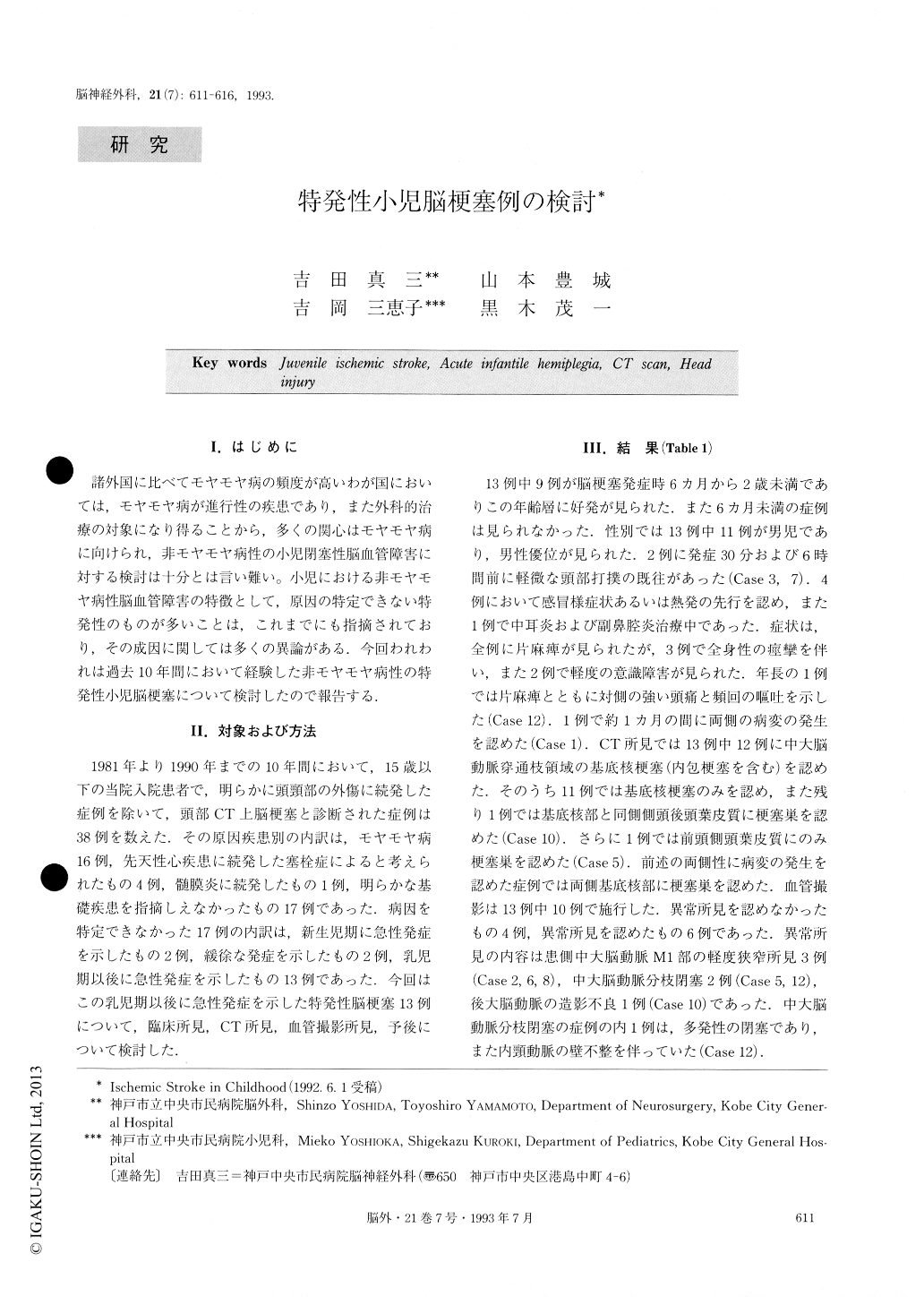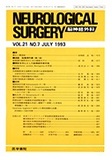Japanese
English
- 有料閲覧
- Abstract 文献概要
- 1ページ目 Look Inside
I.はじめに
諸外国に比べてモヤモヤ病の頻度が高いわが国においては,モヤモヤ病が進行性の疾患であり,また外科的治療の対象になり得ることから,多くの関心はモヤモヤ病に向けられ,非モヤモヤ病性の小児閉塞性脳血管障害に対する検討は十分とは言い難い。小児における非モヤモヤ病性脳血管障害の特徴として,原因の特定できない特発性のものが多いことは,これまでにも指摘されており,その成因に関しては多くの異論がある。今回われわれは過去10年間において経験した非モヤモヤ病性の特発性小児脳梗塞について検討したので報告する.
We have encountered 38 cases of juvenile ischemic strokes during the past 10 years, which included 16 cases of moyamoya disease and 22 cases of non-moyamoya strokes. The etiology could not be determined in most non-moyamoya strokes, except in 4 cases of cardiogenic embolism and 1 case of post-meningitic stroke. We furth-er examined 13 cases of idiopathic strokes, which showed clinical symptoms of so-called acute infantile hemiplegia. Nine out of 13 patients developed strokes be-tween 6 months and 2 years of age. Strong male pre-ponderance was noted, since 11 out of 13 patients were boys.CT scan showed basal ganglionic infarction in the territory of the perforating branches of the middle cere-bral artery in 12 patients. Recurrence of ischemic events occurred in none of the patients during the mean follow-up period of 48.4 months. Functional recovery was also good, since no neurological sequelae were found in 5 pa-tients, and the other 8 disabled children were able to go to school without help and none of the children were men-tally retarded. These results and a review of the litera-ture suggest the importance of traumatic mechanisms in the etiology and pathogenesis of juvenile idiopathic ischemic strokes of the acute infantile hemiplegic type.

Copyright © 1993, Igaku-Shoin Ltd. All rights reserved.


